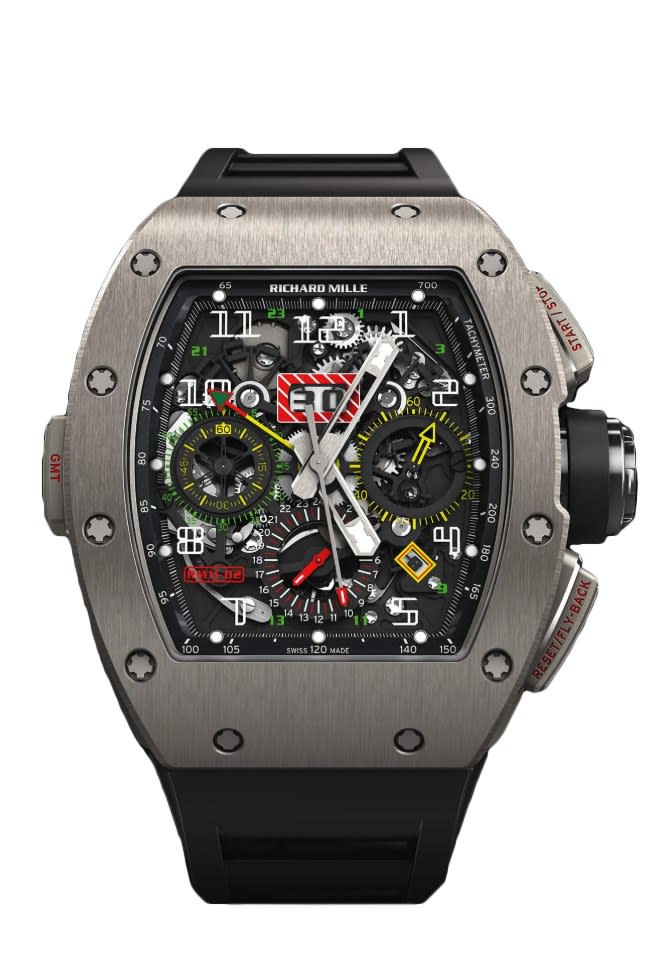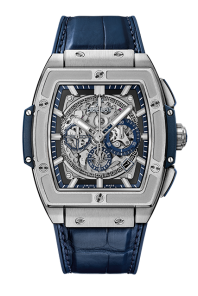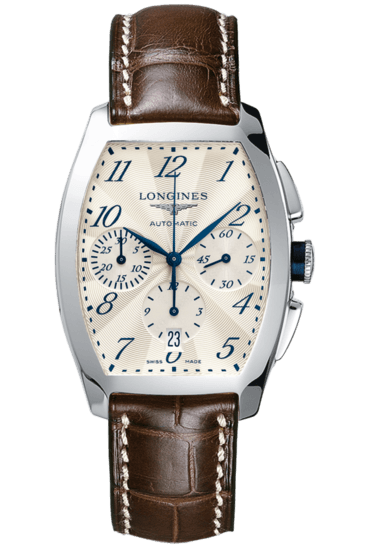What Do Cartier, Richard Mille, and Franck Muller Have In Common? Wouldn't You Like Tonneau!
Reading about watches can often feel like cracking open a textbook. Browsing—and even buying—means being barraged with inscrutable words and phrases like "tourbillons,” “perpetual calendars,” “minute repeaters,” and so on. So here, we'll be breaking down the meaning, history, and importance of different watch terms. Welcome to GQ's Watch Glossary.
Time to sit cross-legged, grab a cup of applesauce, and wait patiently for naptime to begin: we're here to talk shapes. Watches, it turns out, do not come in all shapes and sizes. A large chunk come in rounded cases, whether that’s a circle, or slightly boxier variations like the Patek Philippe Nautilus. Rectangles and squares are next on the totem pole of popularity. But you may have noticed another, inscrutable term floating around in the watch ecosystem: tonneau. While the word sounds florid, it’s really just the French word for barrel. And in the watch world, it describes any piece shaped like a curvy rectangle.


The history of lowercase-t tonneau watches starts with the uppercase-T Tonneau. Louis Cartier’s greatest contribution to watches was his inextinguishable belief that what we wear on our wrist doesn’t need to be circular: he designed the square Santos, the rectangular Tank, and the melty Crash. But his company’s second-ever wristwatch, the Tonneau, became one of its most influential.
The watch and its curved case was originally designed to contour to the wrist. The Tonneau was, and is, an elegant shape. And so, originally, these were not purposeful watches, unless you consider going to elegant soirées a purpose. The thin case of early Tonneaus left barely any room for complex movements.



But a lack of utility doesn’t mean a lack of notoriety. The tonneau case was often used by brands attempting to diverge from tradition. Six years after Cartier debuted the Tonneau, the next brand to embrace the design was Vacheron Constantin in 1912. On its website, Vacheron chalks up the decision as one meant to “break away from the traditional round shape of the watch in the avant-garde spirit of a progressive age.” The takeaway? Circles are lame; barrels are the future.
In more recent history, newcomer watch brands have leveraged the tonneau shape to distinguish themselves from the rounded competition. When Franck Muller launched his namesake brand in the early ‘90s, he committed himself to barrels only. Tonneau watches were much less common, and the design was a way for Franck Muller to distinguish the brand and make it almost immediately identifiable. And then Richard Mille launched a decade later, almost all of that brand’s models came in barrel-like shapes, too.


To paraphrase one person in the watch world I texted on the subject: circles are tired. A brand might not be able to make much noise in the swarmed market of circular pieces, but a tonneau is funky enough to stand out. Richard Mille explained about how he landed on the tonneau as an early signature in an interview with Revolution. The explanation is breathtaking:
“I arrived at the shape one night when I couldn’t sleep. I was trying to create a form that would sit perfectly on the human wrist, and that had a certain organic sensuality but also expressed my obsession with performance and technicality. I went to a hotel bathroom, unwrapped a bar of soap and began carving it with a knife. I carried this piece of soap with me back home. Eventually it broke and I created a cardboard prototype. That was the genesis.”
That’s how a shape goes from the choice of dandies to displaying the phrase “I’d love to kiss your p—y” on Drake’s wrist during the 2019 NBA Finals.
And while the tonneau began, and largely still is used for dressier models, Richard Mille pieces have jumped into sport on the wrist of Rafael Nadal. In some circles, the tonneau is less an elegant string quartet and more a face-melting guitar solo.
Originally Appeared on GQ
